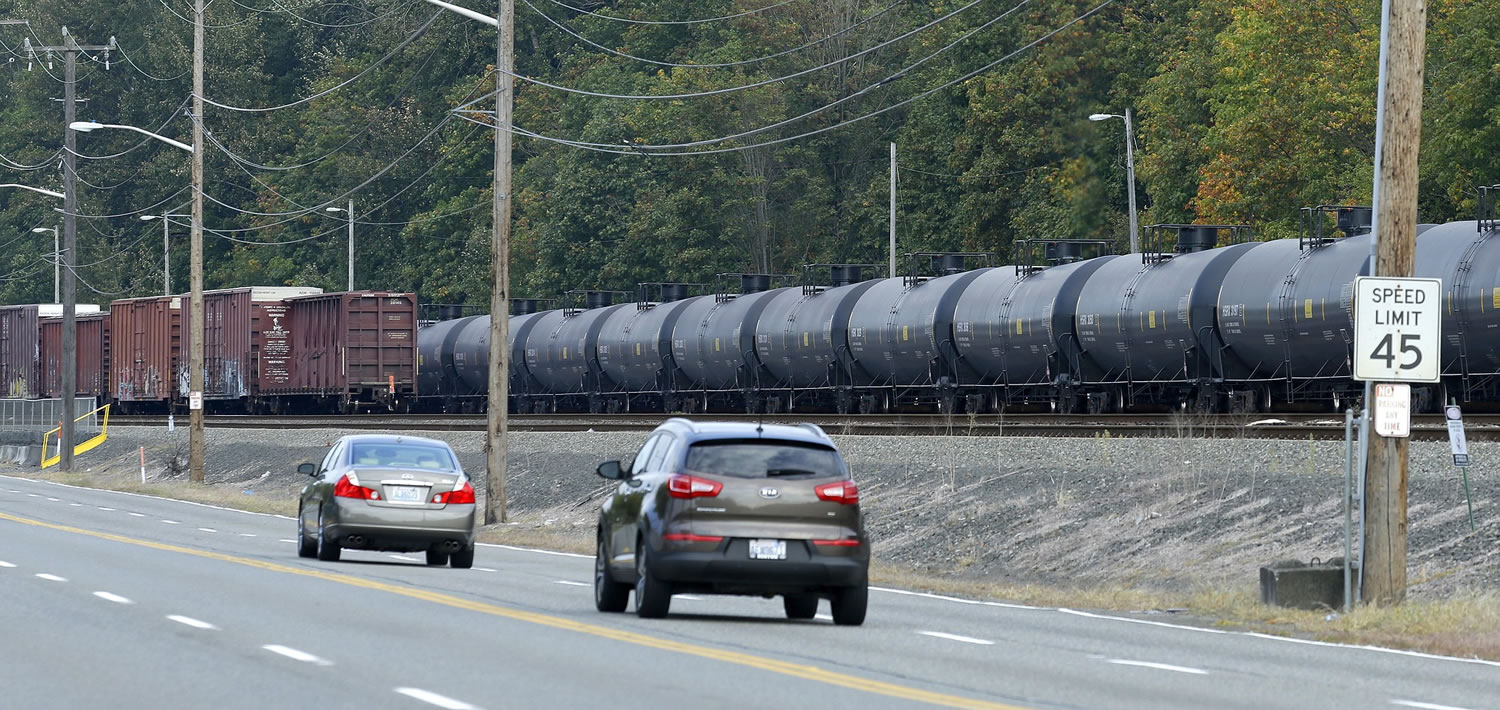Proposed oil-by-rail facilities and refinery expansions in Washington would be enough to bring nearly 20 oil trains rolling into the state every day by 2020, according to a report by the state Department of Ecology.
That’s far more than the two to three trains daily that pass through many counties, including Clark County, now. In response to a federal order, railroads last year reported that as many as 19 oil trains per week pass through some parts of the state en route to existing facilities. If a slew of new proposals is permitted and fully built during the next few years, that number could soar to 137 or more trains per week, according to the Ecology report.
The detailed report, released Monday, was developed in coordination with the state Utilities and Transportation Commission and the Washington Military Department’s Emergency Management Division. It offers the clearest picture yet of how — and how much — oil moves through Washington in a changing energy landscape. The report comes as state lawmakers in Olympia consider new regulations hoping to improve safety in the wake of several high-profile train derailments and explosions involving crude oil.
“When I’m talking to people around the state, one issue people always ask me about is what we’re going to do to protect our state from the dangers of transporting crude oil,” Gov. Jay Inslee said in a released statement. “Increasing numbers of oil trains are coming through Washington and this is our opportunity to take reasonable and necessary steps to improve public safety. This is a high priority for Washingtonians, and for me.”
Safety recommendations
The report includes a dozen recommendations to the state Legislature, many aimed at bolstering the state’s spill prevention and response programs.
The biggest-ticket item suggests hiring additional ecology staff to create and run a grant program ensuring local first responders have the correct training and equipment. The estimated cost would be $4.6 million in the upcoming two-year budget cycle. Another recommendation proposes creating a continuous stream of funding for ecology planners to develop and oversee oil spill response plans for inland and marine areas.
State Sen. Don Benton, R-Vancouver, is not convinced funneling more resources into the ecology department is the right route.
“Long before I would give them money to do anything with trains, I would give the rail industry new safety rules to follow,” Benton said. “Let them beef up their safety without beefing up costs to taxpayers.”
There are proposals currently in the Legislature that would require railroads to create an oil-spill response plan and provide notice to the Department of Ecology about the type of oil being hauled and the routes. The legislation would also require railroad companies to be on the hook to develop contingency response plans to address oil spills. The measure is backed by Inslee.
State Rep. Jim Moeller, D-Vancouver, said he expects Inslee won’t stop pushing for stricter regulations.
“We have an environmental governor. He’ll be proposing these type of things not only this session but the session after and the session after that,” Moeller said. “There has to be some kind of response other than simply ‘no’ from Republicans.”
More by rail, less by vessel
Meanwhile, a dramatic shift in the way oil is moved in the Northwest and elsewhere has left regulators scrambling to keep up.
Nationwide, the transport of crude oil by rail has continued its rapid growth, reaching an estimated 464 million barrels in 2014 — up from about 303 million barrels in 2013, according to the report. (There are 42 gallons in a barrel of oil.)
About 17 million barrels of crude moved by rail in Washington in 2013. Total numbers for 2014 aren’t yet available, said Lisa Copeland, a Department of Ecology spokeswoman.
Still, the rise of oil-by-rail in Washington has been undeniably swift. Virtually no oil traveled by train in the state in 2011.
“It’s a very new practice for us,” Copeland said.
Historically, about 90 percent of the crude oil that entered Washington did so by barges and other marine vessels. The rest came by pipeline. Now, less than 70 percent of oil imports in Washington travel by barge, according to the report, as pipeline and rail have seen sharp increases.
Further changes could be on the horizon. Among the new oil facilities under consideration is a proposed oil transfer terminal at the Port of Vancouver capable of handling about 360,000 barrels of crude per day, or up to four trains daily. If built, the proposal known as Vancouver Energy would be the largest oil-by-rail operation in the United States.
A series of rail accidents have added to the attention on oil train safety. Most recently, a train carrying Bakken crude oil from North Dakota derailed and exploded in rural West Virginia last month. And in Washington, regulators say they know of at least four incidents since December in which oil trains were leaking as they traveled through the state.
All of that underscores the need for greater scrutiny, Copeland said.
“Being in the spotlight is important right now,” she said. “It could happen anywhere.”




